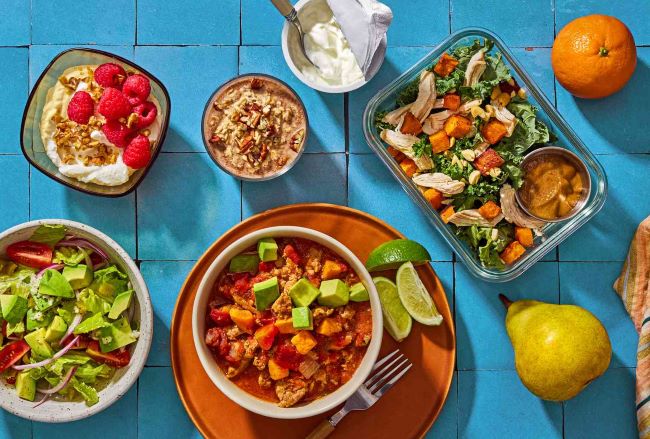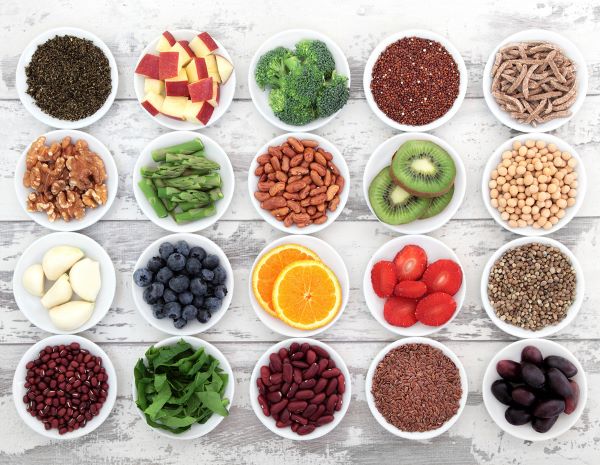In today’s health-conscious world, many individuals are seeking ways to manage their cholesterol levels effectively. A low cholesterol diet can be a valuable resource for anyone looking to improve their heart health and overall well-being.

This article will explore the fundamentals of a low cholesterol diet, its benefits, food recommendations, and tips for creating your own diet plan in PDF format.
What is Cholesterol?
Cholesterol is a waxy substance found in the cells of your body and in the foods you eat. It is essential for producing hormones, vitamin D, and substances that help digest foods. However, having high levels of certain types of cholesterol can increase the risk of heart disease and stroke.
There are two main types of cholesterol:
- Low-Density Lipoprotein (LDL): Often referred to as “bad” cholesterol, high levels of LDL can lead to the buildup of plaque in your arteries, increasing the risk of heart disease.
- High-Density Lipoprotein (HDL): Known as “good” cholesterol, HDL helps remove LDL from the arteries. Higher levels of HDL can lower the risk of heart disease.
Why Follow a Low Cholesterol Diet?
A low cholesterol diet focuses on reducing the intake of foods high in saturated and trans fats, which can contribute to elevated LDL cholesterol levels. Here are some compelling reasons to consider following a low cholesterol diet:
- Heart Health: By lowering LDL cholesterol levels, you can reduce your risk of developing heart disease, heart attacks, and strokes.
- Weight Management: Many foods that are low in cholesterol are also lower in calories and unhealthy fats, making it easier to maintain a healthy weight.
- Improved Overall Well-being: A diet rich in fruits, vegetables, whole grains, and healthy fats promotes overall health and wellness, contributing to better energy levels and vitality.
Why is it important to limit saturated fats in a low cholesterol diet?
Limiting saturated fats is crucial in a low cholesterol diet because these fats can raise LDL cholesterol, which is the “bad” cholesterol that contributes to plaque buildup in the arteries.
Over time, this can increase the risk of heart disease, stroke, and other cardiovascular problems. Saturated fats are commonly found in red meat, full-fat dairy products, butter, and fried foods. By reducing these foods and replacing them with heart-healthy options like unsaturated fats (found in olive oil, nuts, and fish), you can help lower your cholesterol and protect your heart health.
Key Components of a Low Cholesterol Diet
A well-balanced low cholesterol diet emphasizes nutrient-dense foods while limiting unhealthy fats. Here are some key components to consider when creating your low cholesterol diet:

1. Fruits and Vegetables
Fruits and vegetables are high in fiber, vitamins, and antioxidants while being low in calories. Aim for a variety of colors and types to maximize nutritional benefits. Some great options include:
- Apples
- Berries
- Spinach
- Broccoli
- Carrots
- Sweet potatoes
2. Whole Grains
Whole grains are an excellent source of fiber, which can help lower cholesterol levels. Incorporate the following into your meals:
- Oats
- Brown rice
- Quinoa
- Barley
- Whole wheat bread and pasta
3. Lean Proteins
Choose lean sources of protein that are low in saturated fat. Some options include:
- Skinless poultry
- Fish (especially fatty fish like salmon and mackerel, which are high in omega-3 fatty acids)
- Legumes (beans, lentils, chickpeas)
- Tofu and tempeh
4. Healthy Fats
Incorporating healthy fats into your diet can improve heart health. Focus on unsaturated fats and avoid trans fats. Sources of healthy fats include:
- Avocados
- Nuts and seeds
- Olive oil and other plant-based oils
- Fatty fish (salmon, sardines)
5. Dairy Alternatives
Choose low-fat or fat-free dairy products, or opt for plant-based alternatives. Look for options such as:
- Almond milk
- Soy milk
- Low-fat yogurt
- Fat-free cheese
Foods to Limit or Avoid
To effectively manage cholesterol levels, it’s essential to limit or avoid certain foods:

- Saturated Fats: Found in red meat, full-fat dairy products, butter, and many processed foods.
- Trans Fats: Commonly found in fried foods, baked goods, and margarine. Always check food labels for “partially hydrogenated oils.”
- Cholesterol-Rich Foods: While dietary cholesterol has less impact on blood cholesterol for many people, it’s wise to limit foods high in cholesterol, such as organ meats, shellfish, and certain egg products.
Sample Low Cholesterol Diet Plan
Creating a low cholesterol diet PDF is easier when you have a structured plan in mind. Below is a sample one-day meal plan to help you get started:
Breakfast:
- Oatmeal made with almond milk, topped with sliced bananas and a sprinkle of cinnamon.
- A handful of walnuts or almonds.
Morning Snack:
- A small apple with a tablespoon of almond butter.
Lunch:
- Quinoa salad with cherry tomatoes, cucumber, spinach, and a dressing of olive oil and lemon juice.
- Grilled chicken breast or chickpeas for protein.
Afternoon Snack:
- Baby carrots and celery sticks with hummus.
Dinner:
- Baked salmon seasoned with herbs, served with steamed broccoli and brown rice.
- A side salad with mixed greens, avocado, and balsamic vinaigrette.
Evening Snack:
- A small bowl of mixed berries or a piece of dark chocolate (70% cocoa or higher).
Tips for Sticking to a Low Cholesterol Diet
- Plan Your Meals: Take time to plan your meals and snacks in advance to avoid reaching for unhealthy options when you’re hungry.
- Read Labels: Familiarize yourself with reading food labels. Look for items that are low in saturated fat, trans fats, and cholesterol.
- Stay Active: Incorporate regular physical activity into your routine, as exercise can help improve cholesterol levels and support heart health.
- Stay Hydrated: Drink plenty of water throughout the day to stay hydrated and help your body function optimally.
- Seek Support: Consider joining a support group or working with a registered dietitian to help you stay motivated and on track.
Conclusion
A low cholesterol diet can serve as an essential tool for anyone looking to improve their heart health and manage cholesterol levels effectively. By focusing on whole, nutrient-dense foods and avoiding unhealthy fats, you can support your body in maintaining optimal cholesterol levels.
With careful planning and commitment, adopting a low cholesterol diet can lead to significant improvements in your overall health, vitality, and well-being. Remember to consult a healthcare professional before making any significant dietary changes, especially if you have existing health conditions. Embrace the journey toward heart health and enjoy the delicious foods that come along with it!
